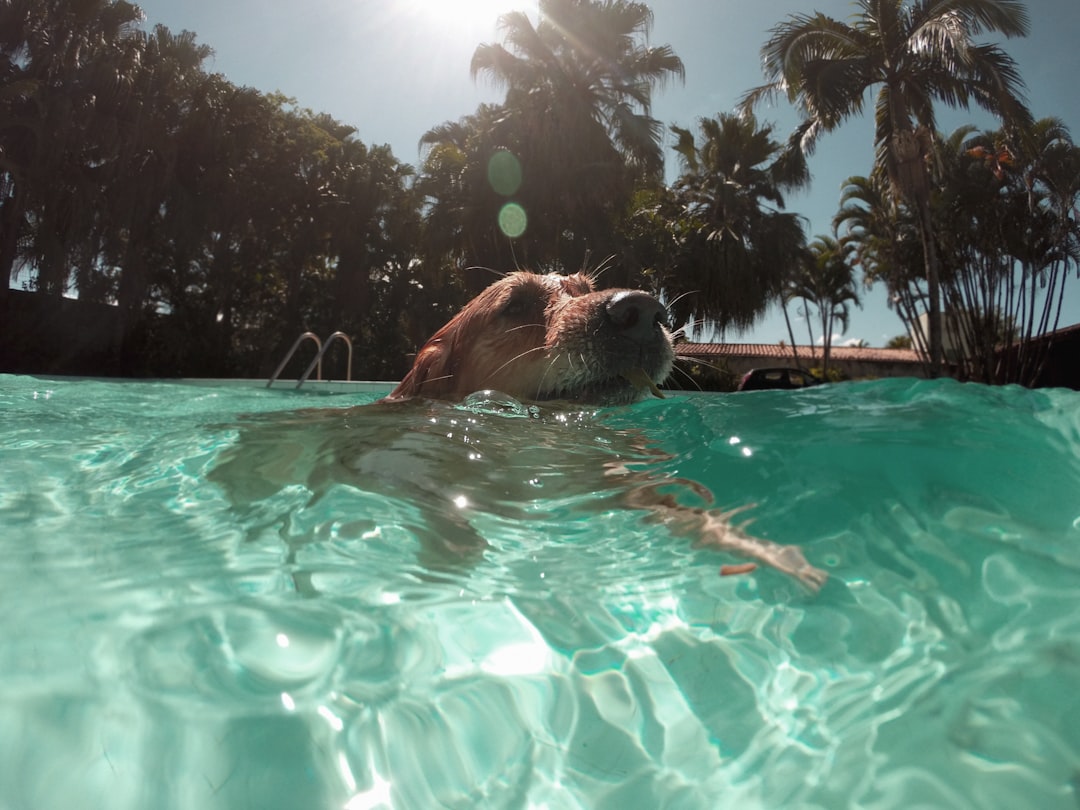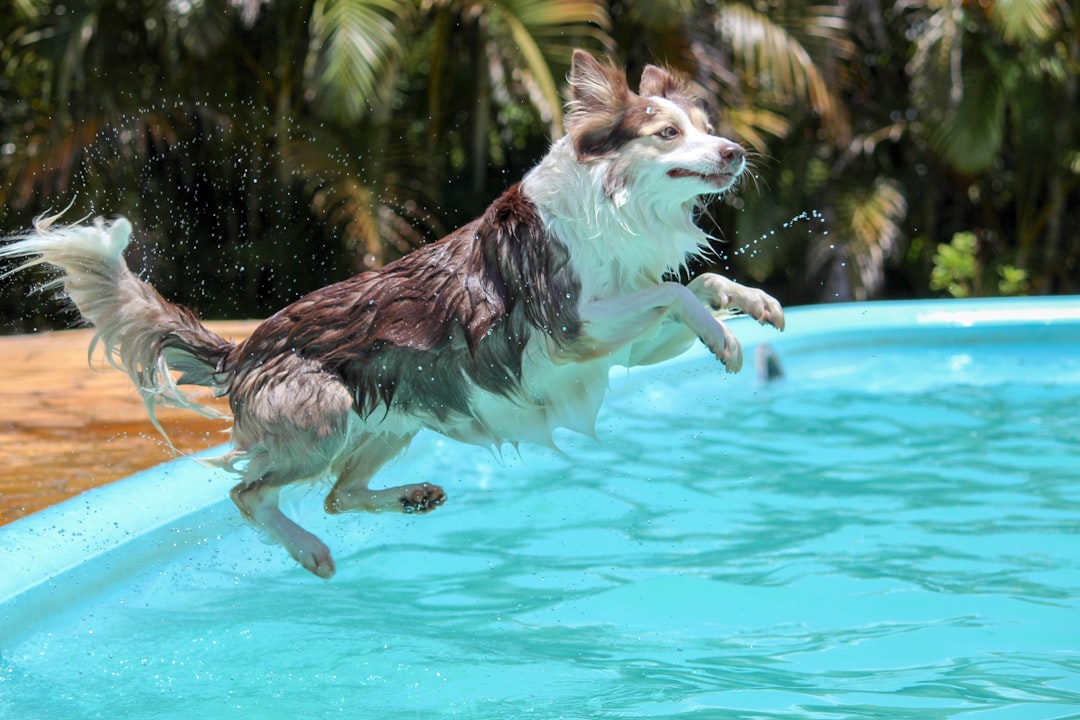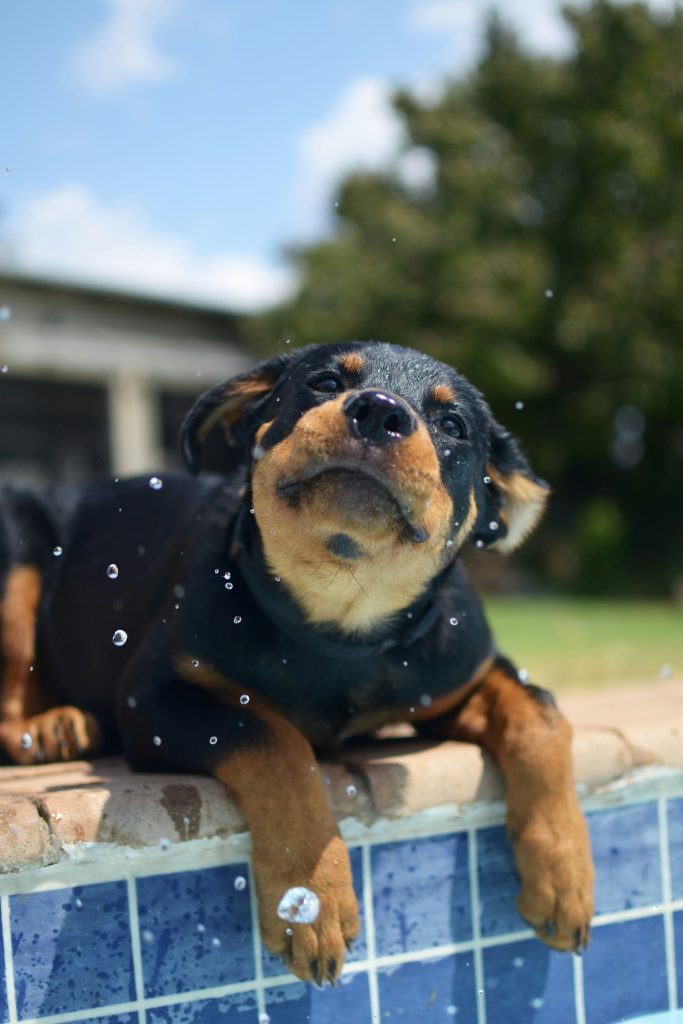Introducing Your Dog to Swimming: Training and Safety – Learn the benefits of swimming for dogs, how to teach them to swim safely, and discover alternative cooling options and activities for dogs who dont enjoy swimming.

Introduction: Understanding the Benefits of Swimming for Dogs
Swimming is a versatile activity that goes beyond just being enjoyable for dogs; it also offers a myriad of benefits for their physical and mental health. Not only does it serve as an excellent form of exercise for dogs, promoting muscle strength and cardiovascular health, but it also provides a low-impact workout that reduces stress on joints, making it suitable for dogs of various ages and physical conditions. For example, breeds prone to joint issues such as Bulldogs or Dachshunds can benefit greatly from swimming due to its low-impact nature, helping them stay active without further straining their joints.
Moreover, the bonding experience that occurs between pet parents and their dogs during swimming sessions fosters trust and emotional connections, strengthening the human-animal bond. This bonding experience is not only beneficial for the dog’s socialization and behavior but also contributes to the pet parent’s understanding of their furry companion. By spending quality time in the water together, both the dog and the owner can create lasting memories and enhance their relationship. An example of this can be seen in senior dogs, where swimming can be a gentle and effective way to maintain their mobility and provide mental stimulation, all while strengthening the bond between the aging dog and their owner.
 The Importance of Teaching Dogs to Swim
The Importance of Teaching Dogs to Swim
Teaching dogs to swim is not only about acquiring a new skill but also about instilling confidence and ensuring their safety around water. By introducing dogs to swimming early on, pet parents can help them become comfortable and proficient swimmers, potentially preventing water-related accidents in the future. For instance, Labrador Retrievers, known for their swimming abilities, can benefit greatly from early swimming lessons to hone their skills and build endurance. This early exposure can create a positive association with water, turning what might be perceived as a daunting experience into a fun and exciting activity for the dog.
Moreover, incorporating swimming into a dog’s routine can offer various health benefits beyond just physical exercise. Swimming engages different muscle groups, providing a full-body workout that can improve cardiovascular health and enhance muscle strength. This low-impact exercise is particularly beneficial for senior dogs or those with joint issues, as the buoyancy of water reduces stress on their joints compared to traditional land-based exercises. Therefore, by teaching dogs to swim, pet parents are not only enriching their pets’ lives with a new skill but also promoting their overall well-being and quality of life.
Training Techniques for Introducing Dogs to Swimming
When training dogs to swim, it is essential to understand that each dog has a unique learning pace and comfort level in the water. Gradual exposure to water is crucial to building their confidence and helping them feel at ease. For instance, if you have a dog that is initially hesitant about water, you can start by allowing them to play near the water’s edge and gradually progress to deeper areas as they become more comfortable. This approach can prevent overwhelming your dog and make the learning process more manageable for them.
Positive reinforcement plays a vital role in teaching dogs to swim. By praising and rewarding your dog for small achievements, such as entering the water or paddling, you can create a positive association with swimming. For example, using treats or their favorite toy as a reward when they show interest in the water can motivate them to continue exploring and learning. This technique not only helps in training but also strengthens the bond between you and your furry companion through a shared activity. Remember, patience is key, and celebrating even small victories can go a long way in building your dog’s confidence and swimming skills.
 Safety Precautions and Considerations for Dog Swimming
Safety Precautions and Considerations for Dog Swimming
When it comes to ensuring the safety of dogs during swimming sessions, there are several essential precautions to consider. Apart from using a life vest to provide buoyancy and visibility, pet parents should also pay attention to the water quality and temperature. Monitoring these factors is crucial as they can significantly impact the well-being of dogs in the water, helping prevent issues like skin irritation or infections. For example, dogs are sensitive to high levels of chlorine in pools, which can irritate their skin and eyes, underscoring the importance of maintaining proper water quality.
Moreover, being mindful of potential hazards in and around the water is key to preventing accidents and creating a secure environment for dogs to swim. Critters like algae or sharp objects such as fish hooks can pose risks to dogs during swimming activities. By carefully inspecting the swimming area and removing any potential dangers, pet parents can minimize the chances of injuries or discomfort for their furry companions. Taking these precautions not only safeguards the dog’s well-being but also ensures that swimming remains a positive and enjoyable experience for them, reinforcing a positive association with water activities.
Breeds and Their Swimming Abilities
When considering the swimming abilities of different dog breeds, it is essential to recognize that not all dogs are natural swimmers. While Labrador Retrievers, Portuguese Water Dogs, and Newfoundlands are well-known for their exceptional swimming skills, other breeds may find swimming more challenging due to their physical characteristics. For example, Bulldogs, with their short legs and necks, may struggle in the water compared to breeds with longer limbs and water-repellent coats. This highlights the importance of tailoring swimming training techniques to suit the unique characteristics and abilities of each breed.
Moreover, certain breeds have been selectively bred for water-related tasks, enhancing their swimming abilities and comfort in aquatic environments. For instance, the Portuguese Water Dog, historically used by fishermen to retrieve gear and assist in fishing activities, naturally excels in water tasks due to its intelligence and webbed feet. By understanding the historical context and intended functions of specific breeds, pet parents can gain insight into their dog’s predisposition towards swimming and adjust their training approach accordingly to ensure a positive and successful swimming experience.

Alternative Cooling Options and Activities for Dogs
While swimming might not be every dog’s favorite activity, there are various alternative ways to help them cool off during hot weather. For instance, cooling jackets or dog pools can provide a refreshing experience without the necessity of swimming, catering to dogs who might not be keen on water activities. These cooling options can be particularly beneficial for breeds that are not natural swimmers or those that simply prefer to stay dry while still enjoying the water’s cooling effects.
In addition to cooling jackets and dog pools, providing shaded areas and easy access to fresh water is essential for keeping dogs comfortable and well-regulated in warm temperatures. This setup allows dogs to regulate their body temperature effectively, reducing the risk of overheating and ensuring their overall well-being. Moreover, engaging dogs in water play activities, even if they don’t involve swimming, can still be a great way to provide them with mental stimulation and physical exercise. Interactive water games like splashing in shallow pools or playing with water toys can keep dogs entertained and active while helping them cool down on hot days, contributing to their overall health and happiness.
Professional Guidance and Resources for Dog Swimming
Professional guidance and resources play a crucial role in ensuring a positive swimming experience for dogs. Enrolling in swimming lessons conducted by experienced trainers can be highly beneficial. These sessions not only focus on teaching dogs how to swim correctly but also emphasize the importance of safety measures in and around water. For instance, trainers can demonstrate proper techniques for introducing dogs to different water environments, such as pools or natural bodies of water. By following expert guidance, both dogs and pet parents can feel more confident and secure during swimming activities.
Moreover, doggy daycares with specialized pool facilities offer an excellent opportunity for dogs to engage in supervised swimming sessions. These facilities provide a controlled environment where dogs can learn and practice swimming skills under the watchful eye of trained staff. Dog owners can also benefit from the peace of mind that comes with knowing their pets are safe and supported while they explore and enjoy the water. Encouraging dogs to swim in such facilities can enhance their swimming abilities, build confidence, and strengthen the bond between dogs and their owners.
In addition to in-person resources, online platforms and articles serve as valuable sources of information for teaching dogs to swim effectively and safely. These resources often cover a wide range of topics, including introductory swimming techniques, safety precautions, and troubleshooting common challenges during the training process. Dog owners can access these materials to educate themselves on best practices, gain insights into canine behavior around water, and discover innovative ways to make swimming a positive experience for their furry companions.
